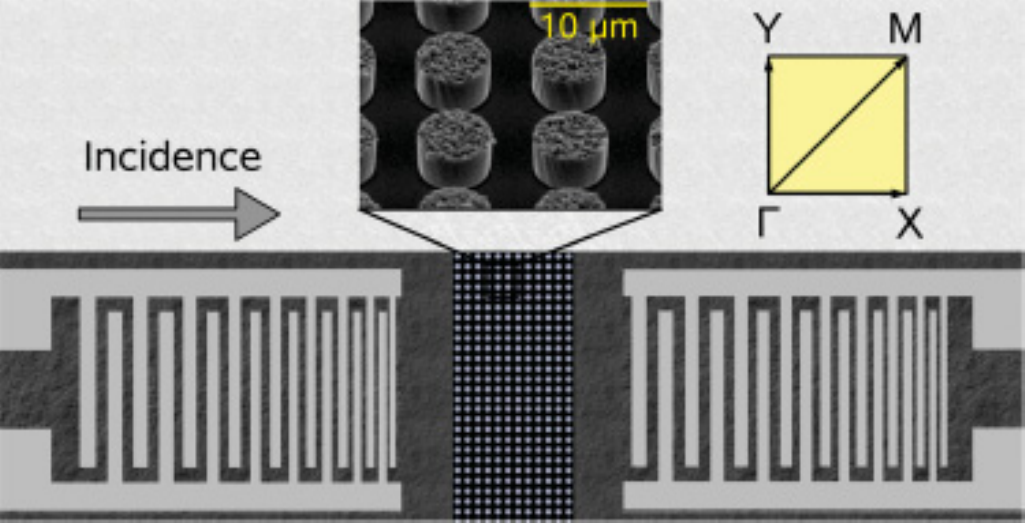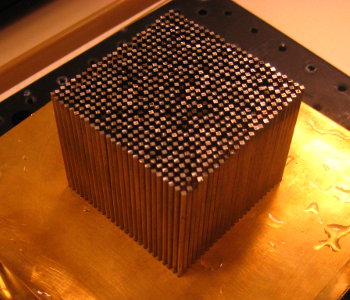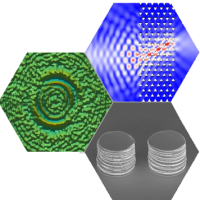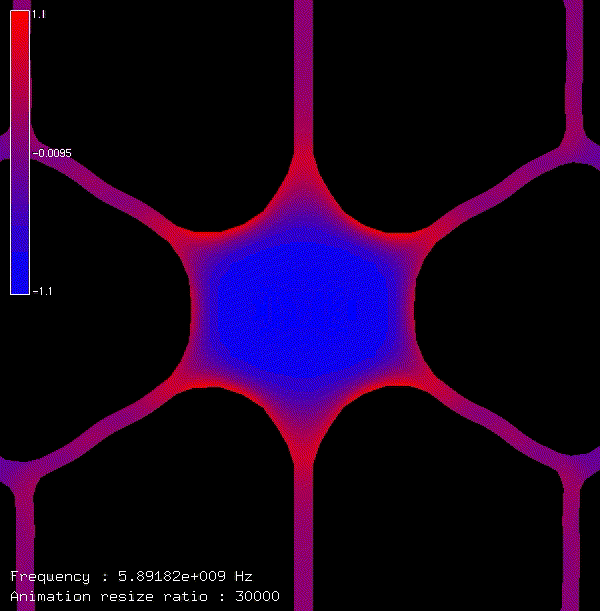Research interests
Research in the group is conducted along 3 main lines with important overlaps.
- The group is well known for contributions to phononic crystals, especially for theory and experiments in the ultrasonic frequency range and surface acoustic waves. We are also studying locally-resonant crystals and acoustic metamaterials.
- We are working on local probe microscopies, especially for thermal measurements and vibration metrology in MEMS. We are developing metrological systems suited for hypersonic phononic crystals and the time-resolved analysis of thermal and acoustic phenomena in solids.
- We are exploring phoxonic crystals (aka crystals for both sound and light) and et photon-phonon interactions (interactions between light and sound).
1. Phononic crystals and acoustic metamaterials
We are especially interested by the physics of phononic crystals, both theoretically and experimentally. We fabricate phononic crystals of various type and scale, covering the spectrum of sonic waves (in air), acoustic waves (in water, typically), and elastic waves (in solids). We consider for isntance the following structures.
- Hypersonic phononic crystals: Composed of a periodic array of holes or pillars, they have interesting applications to signal processing in the frequency range of wireless telecommunications (100 MHz - 5 GHz).
- Locally-resonant phononic crystals: They can support low-frequency band gaps and they can implement many paradygms of acoustic metamaterials.
- Ultrasonic phononic crystals: Their realization and their interrogation is quite simple and they operate at frequencies around 1 MHz for crystals immersed in water.
- Acoustic metamaterials: Beyond purely theoretical aspects, we are designing structures for wide bandwidth acosutic opacity.
Please have a look at our popularization webpages o phononic crystals here.
 |  |
2. Local-probe microscopies and instrumentation
We are working on local-probe thermal microscopy. We are for instance developping a novel thermal microscope using micro-thermocouples mounted on a tuning fork. Moreover, as pioneers of force modulation microscopy, we are developing new geometries for levers used in atomic force microscopy and multimodal measurements (thermal and acoustic coupling, for instance).
We are developing a thermal and acoustic measurement platform featuring time-resolved and high spatial resolution metrology (using a femtosecond laser). The instrument allows us to measure the temporal dynamics of homogeneous and nanostructured samples.
|
3. Cristaux phoxoniques et interactions photon-phonon
Nous avons proposé le concept des bandes interdites photoniques et phononiques simultanées dès 2005, dans le contexte des fibres photo-phononiques. Nous avons depuis largement développé ce concept des cristaux phoxoniques qui ont le potentiel d'exalter les interaction entre lumière et son.
Nous développons des modèles théoriques pour décrire les interactions opto-acoustique dans les fibres optiques (effets Brillouin), en collaboration avec l'équipe Optique Non Linéaire du département FEMTO-ST/Optique.
|
3. Phoxonic crystals and photon-phonon interactions
We proposed the concept of simultaneous photonic and phononic band gaps back in 2005, in the context of photo-phononic fibers. We have since then developed this concept of phoxonic crystals with potential to enhance the interactions of light and sound.
We are developing in parallel theoretical models in order to describe opto-acoustic interactions in optical fibers (Brillouin scattering effects and electrostriction), in collaboration with the Nonlinear Optics group of FEMTO-ST/Optics.
|
|



